-
San Francisco
2170 Cesar Chavez Street, San Francisco: (415) 495-4201
Free Parking at our San Francisco Location
2025 Top 10 Floral Upholstery Fabric Trends You Need to Know
As we approach 2025, the interior design industry is witnessing a vibrant resurgence of floral upholstery fabric trends, capturing the essence of nature while enhancing home aesthetics. According to recent industry reports, the global upholstery fabric market is projected to reach $52 billion by 2025, with floral patterns leading the charge due to their versatility and ability to infuse life and color into living spaces. Floral upholstery fabric not only appeals to design sensibilities but also reflects a growing consumer desire for sustainable and eco-friendly materials, as more brands prioritize responsible sourcing.
Amidst this backdrop, our exploration of the top five floral upholstery fabric trends of 2025 reveals a paradigm shift toward bold designs, intricate motifs, and innovative textures. These trends not only cater to the aesthetic preferences of consumers but are also informed by data indicating a 25% increase in demand for floral designs over the past year. As designers and homeowners alike embrace the dynamic and expressive nature of floral patterns, these fabrics are poised to redefine modern interiors, making them essential for anyone looking to stay ahead in the ever-evolving world of interior decor.
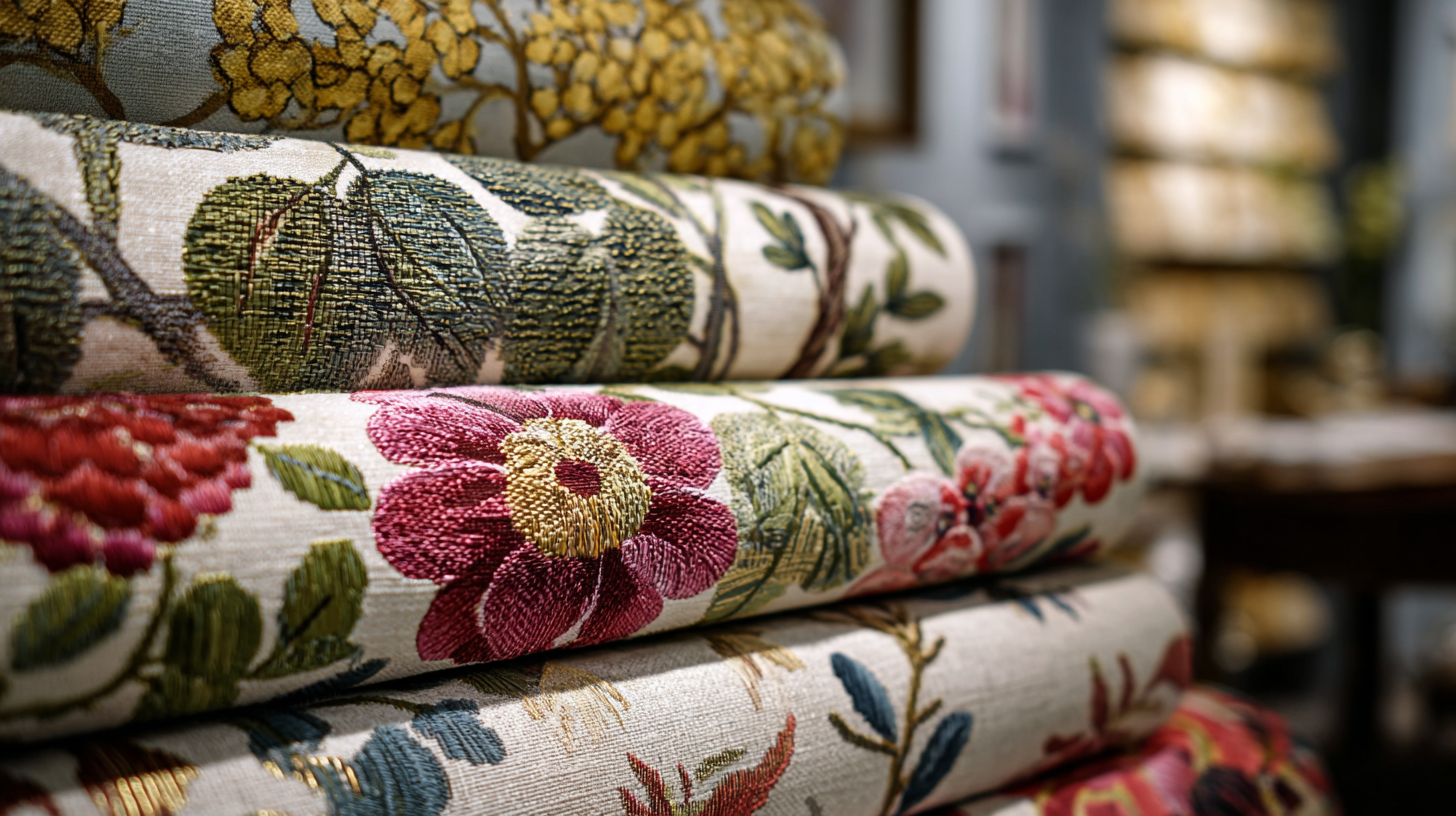
Floral Patterns: The Bold Color Palette Trends for 2025
In 2025, the floral upholstery fabric trends are set to showcase an explosion of bold color palettes, expanding beyond the traditional softer hues. Industry reports suggest that consumer preferences are shifting towards vibrant and saturated colors, with a notable rise in demand for textiles that feature striking combinations of reds, blues, and yellows. According to a recent survey by the Upholstery Fabric Association, 68% of interior designers believe bold floral patterns will dominate residential spaces, signaling a move towards more expressive and invigorating design choices.
One of the most captivating aspects of these trends is the integration of technology in color application. Digital printing allows for intricate floral designs that remain vivid and durable, enhancing the appeal of upholstery fabrics. The Global Textile and Upholstery Market Report indicated an expected growth rate of 5.2% annually in fabric technology enhancements over the next five years. This means we can anticipate not only more diverse floral patterns but also better performance in terms of wear and colorfastness, making bold upholstery a lasting staple in modern interiors.
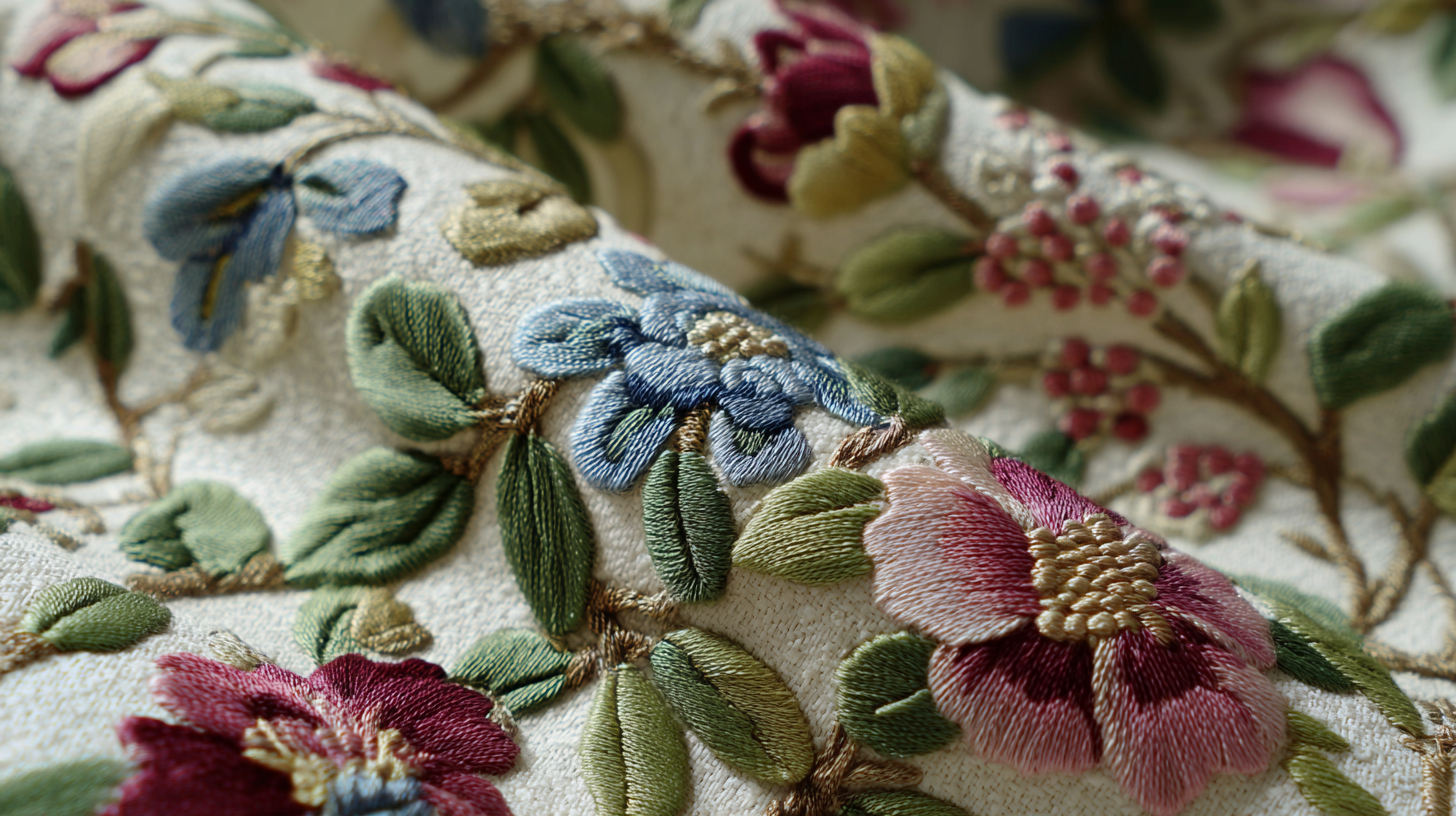
Maximalism vs. Minimalism: Finding Balance in Floral Designs
In the dynamic world of floral upholstery fabric, the clash between maximalism and minimalism presents an exciting opportunity to explore diverse design philosophies. Maximalism embraces vivid patterns, layering, and a bold use of color, creating a vibrant tapestry that evokes emotion and personality. This trend encourages the use of oversized floral motifs, often intermingled with contrasting patterns, allowing for a rich and eclectic aesthetic that can transform any space into a lively environment.
On the other hand, minimalism takes a more understated approach, favoring simplicity and subtlety. Here, floral designs are characterized by muted color palettes, delicate prints, and an emphasis on negative space. This trend seeks to create a calming atmosphere, where flowers are thoughtfully integrated rather than overwhelming the senses. The balance between these two extremes invites designers and homeowners to experiment, blending intricate patterns with simplified elements to achieve harmony in interior decor, ultimately defining personal style through floral upholstery fabrics.
2025 Top 10 Floral Upholstery Fabric Trends You Need to Know
| Trend | Description | Style Category | Color Palette | Ideal Use |
|---|---|---|---|---|
| Oversized Floral | Bold, large floral patterns that create a dramatic effect. | Maximalism | Vibrant hues like fuchsia, teal, and gold. | Statement furniture pieces in living rooms. |
| Minimalist Blossoms | Small, subtle floral designs with a cleaner aesthetic. | Minimalism | Pastels and muted tones like mint, blush, and cream. | Accent chairs or cushions in modern spaces. |
| Vintage Floral | Retro-inspired florals that evoke nostalgia. | Maximalism | Earthy tones like burnt orange, olive green, and mustard. | Traditional interiors and eclectic decor. |
| Botanical Prints | Detailed depictions of flowers and plants for a natural look. | Minimalism | Greens, soft blues, and neutral backgrounds. | Modern living rooms and home offices. |
| Tropical Vibes | Lush, vibrant floral patterns inspired by tropical landscapes. | Maximalism | Bright colors like coral, turquoise, and sunny yellow. | Outdoor furniture and summer interiors. |
| Tone-on-Tone Floral | Subtle patterns that blend with the fabric's base color. | Minimalism | Monochromatic shades, often in whites and grays. | Contemporary homes seeking understated elegance. |
| Geometric Florals | Floral designs integrated with geometric shapes for a modern twist. | Maximalism | Contrast colors like navy, mustard, and white. | Urban apartments and fashionable lounges. |
| Floral Watercolors | Soft, painterly floral patterns that evoke a dreamy feel. | Minimalism | Soft hues like lavender, soft pink, and sky blue. | Bedrooms and serene spaces. |
| Art Deco Florals | Rich, stylized flowers reminiscent of the Art Deco era. | Maximalism | Deep jewel tones like emerald, sapphire, and ruby. | Formal dining rooms and luxurious settings. |
| Gothic Florals | Dark, moody floral patterns with a dramatic flair. | Maximalism | Black, plum, and dark green. | Gothic or eclectic interiors and home bars. |
Sustainable Fabrics: Eco-Friendly Floral Upholstery Options
As we look ahead to 2025, the trend in floral upholstery fabric is leaning heavily towards sustainability. Eco-friendly materials are becoming increasingly popular, as consumers seek to make environmentally conscious choices in their home decor. This shift not only reflects a growing awareness of ecological issues but also showcases innovative approaches to fabric production that minimize environmental impact. Brands are now focusing on using organic fibers, such as cotton and hemp, which require less water and fewer pesticides, ensuring a lower carbon footprint.
In addition to traditional plant-based materials, a range of recycled and upcycled fabrics are also making waves in the floral upholstery market. These options offer vibrant patterns and designs while diverting waste from landfills. By incorporating techniques like digital printing, manufacturers can create stunning floral motifs that resonate with both eco-conscious consumers and design enthusiasts alike. This commitment to sustainability, combined with fresh, artistic interpretations of floral patterns, makes the upcoming floral upholstery trends not only visually appealing but also ethically responsible.
Cultural Inspirations: Global Floral Motifs Making a Comeback
The resurgence of global floral motifs in upholstery fabrics reflects a rich tapestry of cultural stories and artistic expressions. As we embrace 2025, designers are increasingly drawing inspiration from traditional patterns found in various cultures. From delicate Japanese cherry blossoms to bold African prints, these floral designs offer a diverse range of aesthetics that breathe new life into contemporary interior spaces. The emphasis on cultural authenticity allows homeowners to connect with different heritages through their decor choices.
Moreover, this trend highlights the importance of sustainability and artisanal craftsmanship. Many designers are collaborating with global artisans to create fabrics that not only feature intricate floral patterns but also tell a story of their origins. This blend of artistry and cultural significance resonates with consumers looking for meaningful decor elements. As floral upholstery becomes a canvas for individual expression, it celebrates the rich, cross-cultural influences that make our living spaces uniquely personal.
2025 Top 10 Floral Upholstery Fabric Trends
Mix and Match: Creative Ways to Combine Floral Prints in Decor
Mixing and matching floral prints can transform your living space into a vibrant and inviting haven. One creative approach is to pair large, bold florals with smaller, delicate patterns. For instance, a large chrysanthemum print on a sofa can be beautifully complemented by a soft, dainty floral pattern on throw pillows. This contrast not only adds depth to your decor but also creates a sense of balance and harmony in the room.
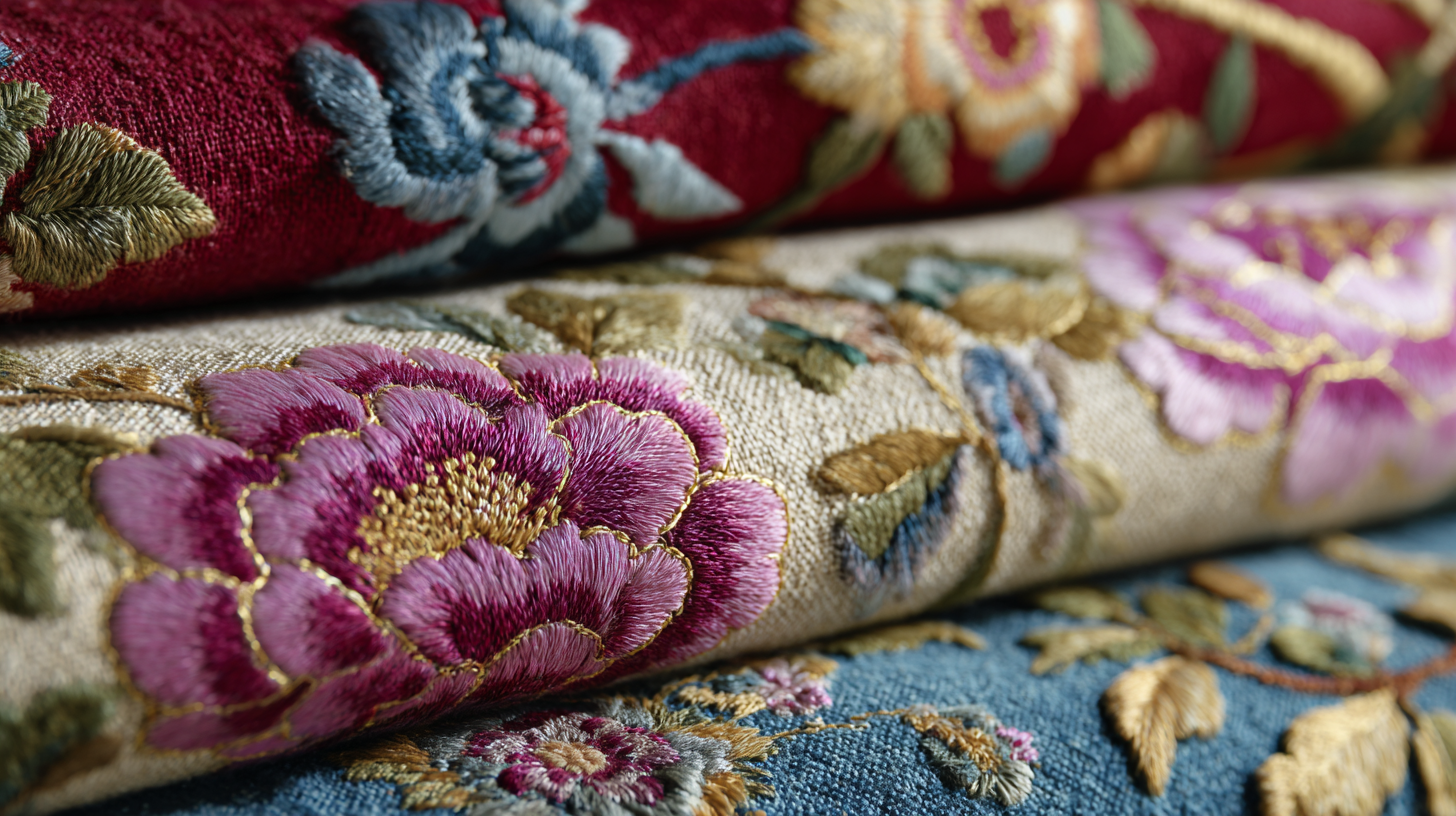
Another effective strategy is to incorporate various colors from the floral prints throughout your space. If your upholstery features bright, saturated hues, consider drawing those colors into other elements, such as curtains, area rugs, or artwork. Layering different floral designs while maintaining a cohesive color palette can elevate the overall aesthetic. Additionally, experimenting with textures, like combining velvet upholstery with linen cushions, can enhance the visual interest and tactile experience in your decor, making the environment more dynamic and engaging.
Related Posts
-
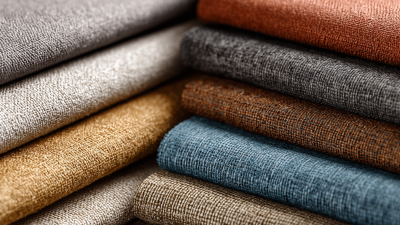
Exploring the Rise of Sustainable Upholstery Fabrics in Canada: Trends, Materials, and Insights for 2023
-
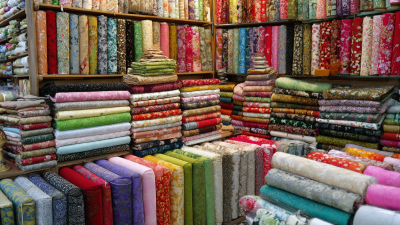
2025 How to Find the Best Deals at Fabric Outlets for Your Next DIY Project
-

2025 Top 10 Upholstery Fabrics for Chairs That Transform Your Living Space
-

2025 Top 5 Fabric Warehouse Trends You Can't Miss for Your Next Project
